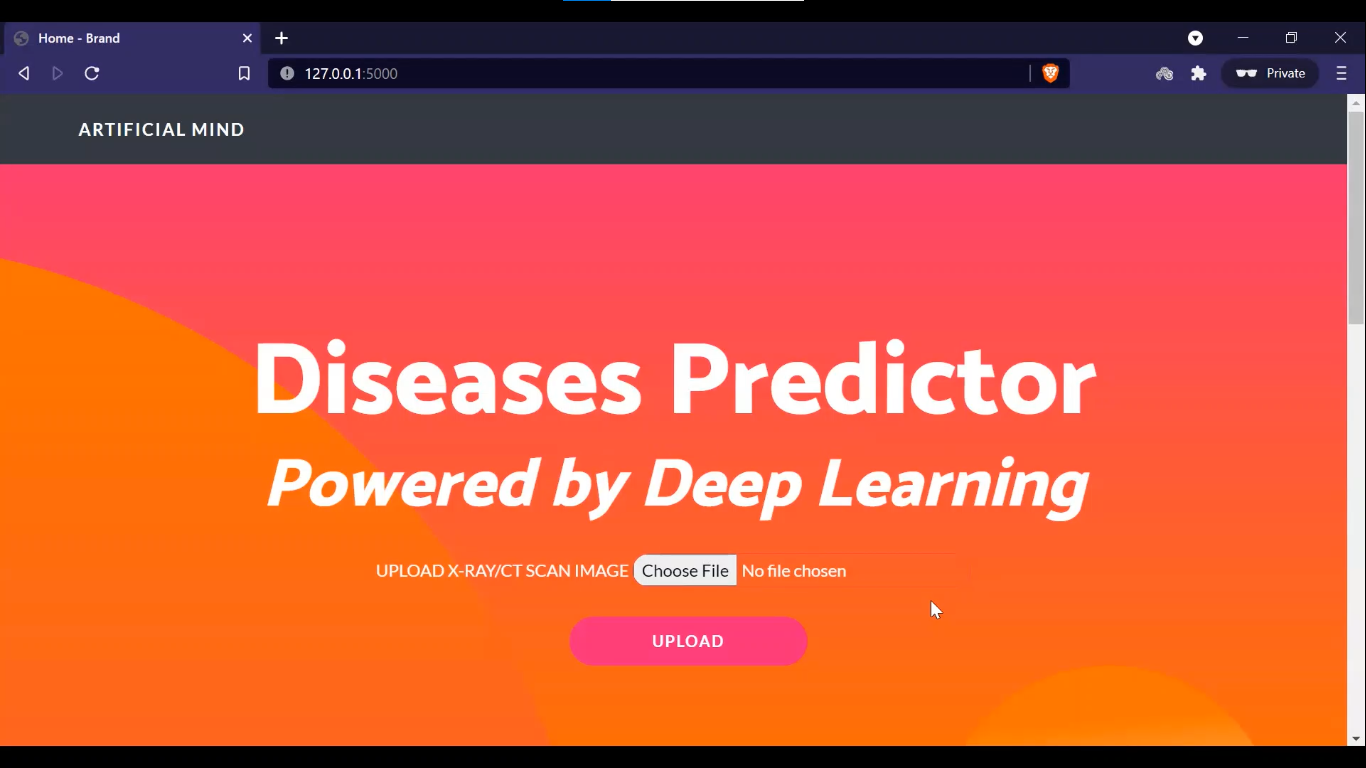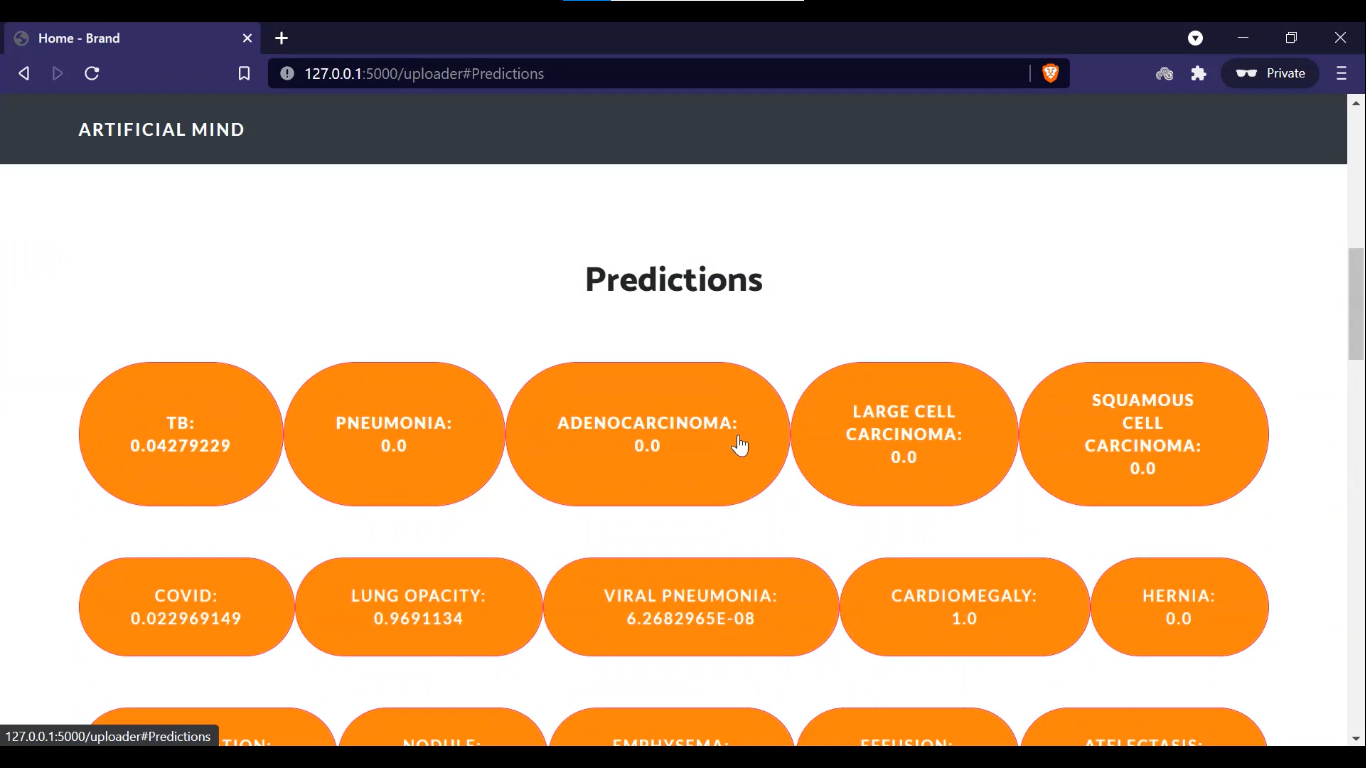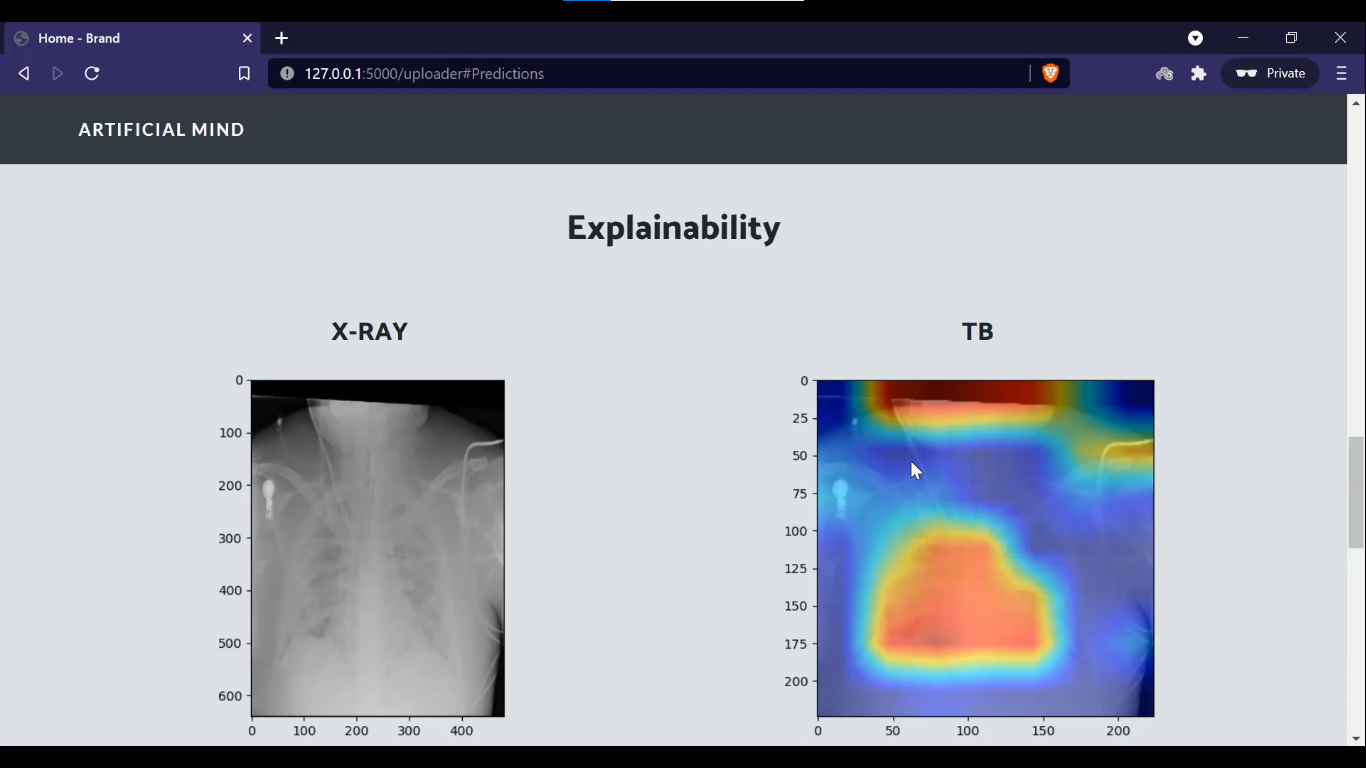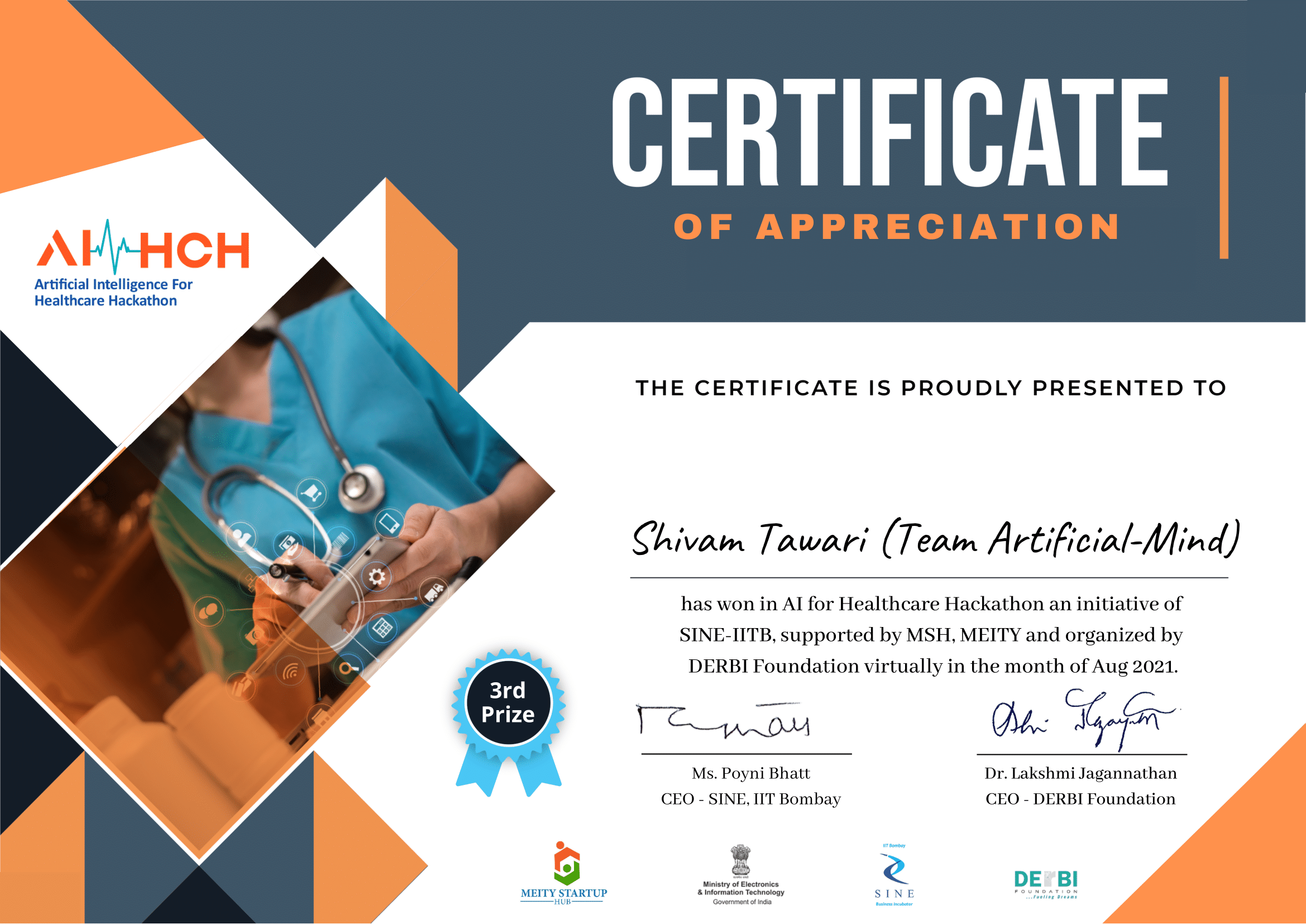XRayd - An AI-Powered Medical Imaging Platform
As part of the AI for Healthcare Hackathon 2021, our team developed XRayd, an AI-powered platform to assist in the analysis of medical chest scans. The project was awarded Second Runner Up for its comprehensive approach, technical depth, and focus on model interpretability.
 Xrayd Platform UI
Xrayd Platform UI
The Challenge
Diagnosing lung diseases from medical scans requires specialized expertise and can be time-consuming. We aimed to create a tool that could serve as a “second opinion” for medical professionals, capable of identifying multiple potential diseases from a single scan and providing insights into its reasoning.
The End Result: An Interactive Prediction Platform
The outcome is a user-friendly web application where a user can upload a chest X-ray or CT scan image and receive predictions for 21 different lung diseases.
 The prediction interface displays probabilities for various lung diseases in a clean, tag-based format.
The prediction interface displays probabilities for various lung diseases in a clean, tag-based format.
A key feature of the platform is AI Explainability. Alongside the predictions, the system generates a heatmap using Grad-CAM (Gradient-weighted Class Activation Mapping). This visualization highlights the specific regions in the scan that the model focused on to make its prediction, offering crucial transparency.
 Example of Grad-CAM output, showing the original X-ray next to the heatmap for a TB prediction.
Example of Grad-CAM output, showing the original X-ray next to the heatmap for a TB prediction.
The Technical Backbone: A Suite of Specialized Models
The platform is powered by a collection of distinct, fine-tuned deep learning models, each tailored for a specific classification task. This multi-model approach ensures higher accuracy and robustness.
Model Summaries
1. Multi-Class COVID-19 Classification (EfficientNetB7)
This model uses a transfer learning approach with EfficientNetB7 for classifying chest X-rays into four categories, including COVID-19. By freezing the pre-trained base and adding a custom classification head, the model achieved approximately 85% validation accuracy, with Grad-CAM for interpretability.
2. Multi-Label Disease Classification (SEResNet152)
To handle the complex NIH Chest X-ray dataset, we employed a pre-trained SEResNet152. The architecture was adapted with a custom classifier head and trained on a TPU using Binary Cross-Entropy loss and class weights to manage severe class imbalance, evaluated with per-class AUC and accuracy.
3. Multi-Label Cancer Classification (VGG16)
This model identifies four types of cancer from CT scans. Built on a fine-tuned VGG16 base, it features a custom head with Batch Normalization and ReLU activations for stable learning. The model was trained over 100 epochs, with performance tracked via accuracy/loss curves and Grad-CAM visualizations.
4. Binary Pneumonia Classification (Custom VGG-style CNN)
We implemented a custom VGG-style CNN for binary "Normal" vs. "Pneumonia" classification. Initial layers were seeded with VGG16 weights. A key feature was a custom data generator that performed on-the-fly data augmentation and oversampling to address class imbalance, achieving 82.5% test accuracy with high recall (0.99).
Technologies Used
- Machine Learning: TensorFlow, Keras, EfficientNet, SEResNet, VGG16
- Backend: Python, Flask
- Frontend: HTML, CSS, JavaScript
Outcome
- Second Runner Up, AI for Healthcare Hackathon 2021: The project was recognized for its technical sophistication, practical application, and emphasis on explainable AI.

